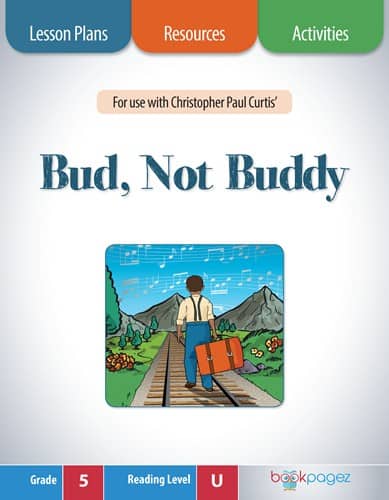Title: Bud, Not Buddy
Author: Christopher Paul Curtis
Genre: Historical Fiction
Themes: Self Management, Friendship, Social Awareness, Family, Self Awareness, Relationship Skills, Black History Month, Decision Making, Perseverance, Award Winners
ISBN: 9781101934265
Publisher's Summary:
Bud, Not Buddy by Christopher Paul Curtis is an award-winning novel that follows the journey of Bud Caldwell, a resilient 10-year-old orphan living in Michigan during the Great Depression. After the loss of his mother at age six, Bud is shuffled between foster homes and an orphanage, never losing hope that he will find the family he longs for. Clutching his suitcase of treasured keepsakes and a mysterious flyer for a jazz musician named Herman E. Calloway, Bud sets out on a courageous quest to find the man he believes is his father. The story unfolds through Bud's clever perspective, infused with humor and a set of self-authored "Rules and Things for Having a Funner Life." Along his journey, Bud experiences the kindness of strangers, the challenges of poverty and racism, and the enduring power of hope. The novel's rich historical backdrop, engaging narrative, and authentic characters make it a standout choice for classroom discussions about perseverance, family, and the African American experience during the 1930s. Bud, Not Buddy is celebrated for its heartfelt storytelling and its ability to spark meaningful conversations about history, resilience, and the search for belonging.








